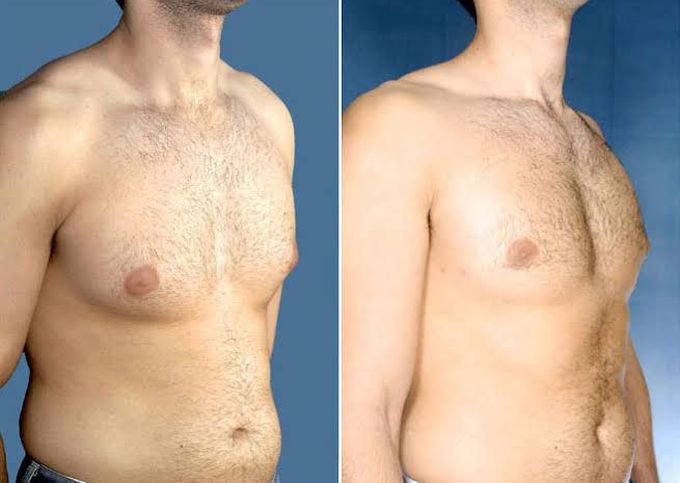


Gynecomastia
Gynecomastia is a benign enlargement of the male breast (usually bilateral but sometimes unilateral) resulting from a proliferation of the glandular component of the breast. It is defined clinically by the presence of a rubbery or firm mass extending concentrically from the nipples. Gynecomastia should be differentiated from pseudogynecomastia (lipomastia), which is characterized by fat deposition without glandular proliferation.
Very inportant distinction made between gynecomastia and lipomastia. The first is glandular and hormonally influenced, the second is just fat.
Generally, no treatment is required for physiologic gynecomastia. Pubertal gynecomastia resolves spontaneously within several weeks to 3 years in approximately 90% of patients. Breasts greater than 4 cm in diameter may not completely regress.
Identifying and managing an underlying primary disorder often alleviates breast enlargement. [28] If hypogonadism (primary or secondary) is the cause of gynecomastia, parenteral or transdermal testosterone replacement therapy is instituted. However, testosterone does have the potential to exacerbate gynecomastia through the aromatization of the exogenous hormone into estradiol.
Gynecomastia surgery risks include: Reactions to tape, suture materials, glues, topical preparations or injected agents Anesthesia risks Bleeding (hematoma) Blood clots Breast asymmetry Breast contour and shape irregularities Changes in nipple or breast sensation may be temporary or permanent Damage to deeper structures—such as nerves, blood vessels, muscles and lungs—can occur and may be temporary or permanent Deep vein thrombosis, cardiac and pulmonary complications Fatty tissue found in the breast might die (fat necrosis) Fluid accumulation (seroma) Infection Persistent pain Poor wound healing Possibility of revision surgery Unfavorable scarring
Medications used to treat breast cancer and other conditions, such as tamoxifen (Soltamox), raloxifene (Evista) and aromatase inhibitors (Arimidex), may be helpful for some men with gynecomastia.


